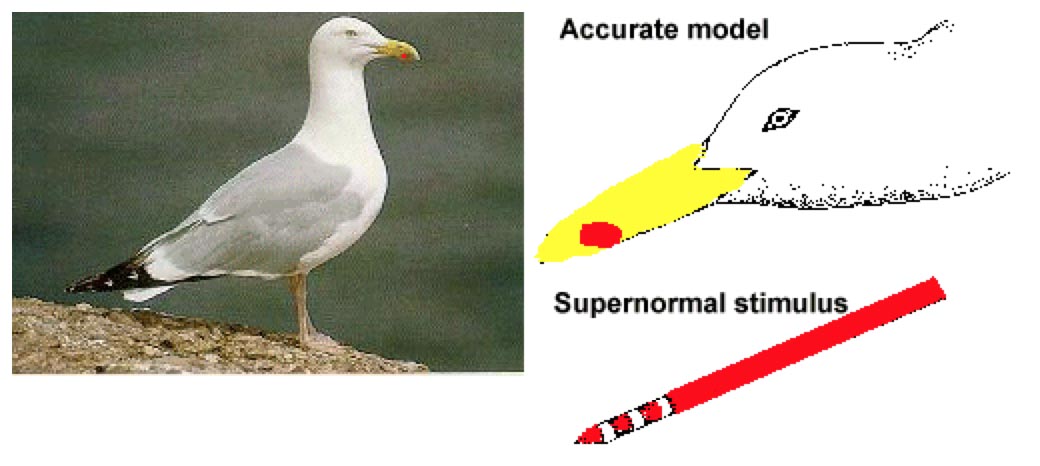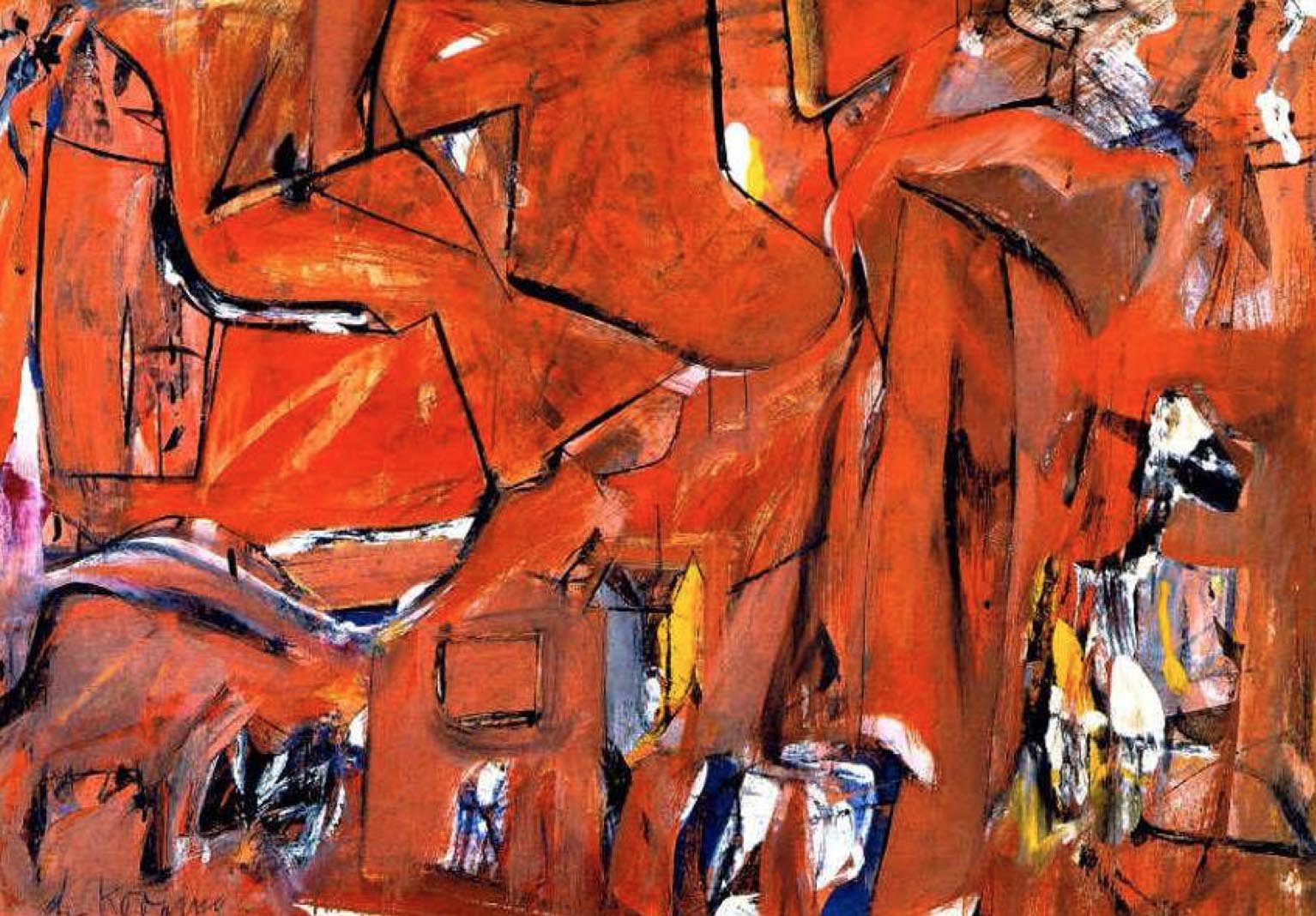Cats miaow, dogs bark, and frogs croak. Other animals riffle their feathers (peacocks), glow (fireflies), or release scents (skunks). Or they write poetry and buy flowers and paint (humans). All to create responses from others, in order to survive or make life more pleasant.
Well. Herring gulls are mostly auditory (cawing) and physical: they have a distinct yellow beak with a red dot on it, and when their chicks are born, they tap onto the red dot with their beak to let their mom know they want food.
In the 1940s, the Dutch biologist Nikolaas Tinbergen took that beak further and developed what he calls supernormal stimuli. Through testing several versions, he reverse-engineered a red stick with three red stripes on it. The stripes didn’t exactly look like the dots, but looked similar enough. It proved to be an upgraded seagull-beak. The baby seagulls went totally wild on it, picking away. They preferred it over the real beak.

Tinbergen had figured out that you can build an artificial object that releases a stronger instinctive reaction than the object for which the instant was originally evolved.
And so he made fake eggs to see which birds preferred, finding out that they picked the larger eggs, with more clear markings and more bright colors. These were preferred to bird’s own pale eggs.
Tinbergen also discovered tiny male fish would attack a wooden fish model more vigorously than a real male, if its underside was redder. And he made cardboard butterflies with clearer markings, that attracted male butterflies more than real female butterflies did.
The superstimulus, by their exaggerations, clearly create response, communicating to primal instincts.
We have such exaggerations too, responding to the hard-wiring of our brains to focus on parts of objects that (apparently) matter the most. Females take boob jobs or lip augmentation, while men hit the gym to increase their abs. But the interesting analogy in the seagulls is that the abstract art (a stick with red lines on it) creates such elicit response.
Imagine there’s a museum out there, created by seagulls, filled with their Picasso’s and Monet’s. Maybe all of them would show plays of the theme of the yellow beak with red stripes. Nobody of the sea-gull visitors would really understand what it means, but it’d draw strong reactions from them.
We play this seagull game too, all the time. We look at Rothko’s and Willem de Kooning’s without knowing why we like it. It’s the Abstract Supermother we’re looking at.




